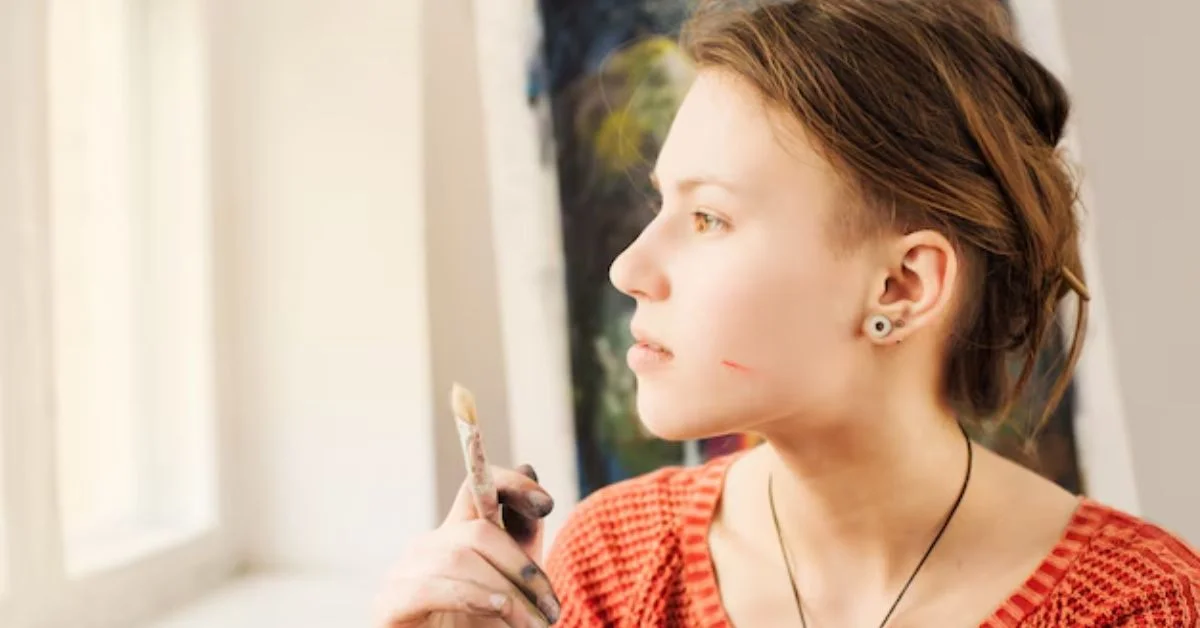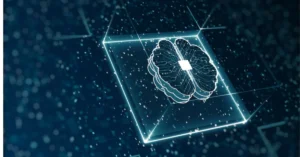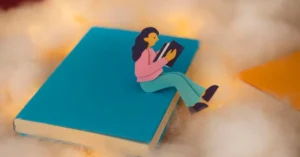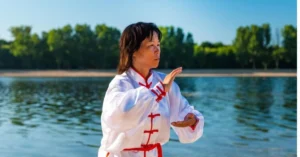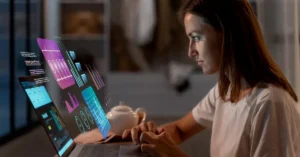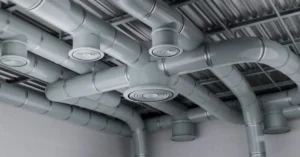Are you ready to elevate your jewelry game with a flat piercing? This trendy and stylish body modification is gaining popularity among those looking for something unique. But before you dive in, it’s essential to understand what a flat piercing entails and how to care for it properly. With the right aftercare tips, your new accessory can shine brightly without any unwanted complications. So, let’s explore everything from pain levels and healing times to ideal jewelry choices and aftercare routines that will keep your flat piercing healthy and happy!
What Exactly Is A Flat Piercing?
A flat piercing is a type of body piercing that’s typically placed on the upper ear, just above the cartilage. Unlike traditional piercings that go through the lobe or thicker parts of the ear, a flat piercing goes through a flatter area, allowing for unique jewelry placements.
This style can be customized with various types of jewelry like studs and hoops, making it versatile for different looks. It appeals to those who want something distinct yet subtle. The positioning also creates an opportunity to showcase your personal style.
Flat piercings are often done with a needle rather than a gun to ensure precision and reduce trauma to the surrounding tissue. This careful approach helps promote better healing and minimizes discomfort during the process.
How Painful Is A Flat Piercing?
When considering a flat piercing, many people wonder about the pain involved. Pain tolerance varies from person to person. For some, it may feel like a quick pinch or sting when the needle goes through. Others might experience discomfort that lingers for a moment longer.
The area being pierced can also influence the pain level. The flat piercing is typically done on the upper ear cartilage, which can be more sensitive than fleshy areas of your body. Keep in mind that while there’s initial discomfort during the procedure, it usually subsides quickly.
Afterward, you might feel tenderness around the site as your body begins to heal. This sensitivity is normal and should decrease over time. Proper aftercare plays an essential role in managing any lingering discomfort during recovery.
How Long Does A Flat Piercing Take To Heal?
Healing time for a flat piercing can vary significantly from person to person. Generally, you can expect it to take anywhere from three to six months for the initial healing process. Factors like your body’s natural healing ability and how well you follow aftercare instructions play a significant role.
During this period, it’s essential to keep an eye on any signs of infection or irritation. Your piercing might feel tender or swollen initially, but these symptoms should gradually decrease as it heals. If discomfort persists beyond the first few weeks, consider consulting with a professional piercer.
After about six months, many people find their flat piercings are fully healed and ready for more adventurous jewelry choices. However, don’t rush; it’s crucial to give your body the time it needs for proper recovery before making any changes.
Flat Piercing Aftercare
After getting a flat piercing, proper aftercare is essential for optimal healing. Begin by keeping the area clean and free from bacteria. Use saline solution or an antiseptic spray recommended by your piercer to gently clean around the jewelry twice a day. Avoid using harsh soaps or alcohol-based products that can irritate your skin.
Avoid touching your new piercing with unwashed hands. If you need to adjust or clean it, always ensure cleanliness first. This precaution helps prevent infections and complications during the healing process.
It’s also crucial to avoid swimming in pools, hot tubs, and natural bodies of water until fully healed. These environments can introduce harmful bacteria to your fresh piercing. Keeping hair products away from the area will further reduce irritation as well.
What Jewelry Should I Wear In My Flat Piercing?
Choosing the right jewelry for your flat piercing is crucial for both comfort and style. Generally, titanium or surgical stainless steel are excellent choices because they are hypoallergenic and less likely to irritate newly pierced skin. Opting for materials that promote healing can make a significant difference.
When it comes to designs, flat piercings often look great with flatter studs or dermal anchors. These options sit flush against the skin, minimizing irritation while still allowing you to express your personal style. Avoid heavy pieces during the initial healing phase as they can put unnecessary pressure on the piercing.
Consider the size of your jewelry carefully. Too tight or too large can lead to issues like embedding or migration. Always consult with a professional piercer when selecting jewelry after your procedure—they’ll help guide you toward what’s best for your unique anatomy and healing process.
Different Types Of Flat Piercings
Flat piercings come in various styles, each offering a unique look and feel. One popular type is the horizontal flat piercing, which sits parallel to the ear’s natural contours. This placement creates an edgy appearance that can be accentuated with various jewelry options.
Another option is the vertical flat piercing. Positioned perpendicular to the ear’s surface, this style draws attention and often uses longer jewelry pieces like barbells or decorative studs. The vertical orientation can add dimension and flair to your overall aesthetic.
Additionally, there are multiple placements for flat piercings on different parts of the body, such as the mid-helix or even on cartilage near the tragus. Each type allows for creative expression while providing versatility in styling your new accessories.
Why Shouldn’t I Get A Flat Piercing?
While flat piercings can be a stylish addition to your jewelry collection, they may not be suitable for everyone. One primary concern is the healing process. Flat piercings often take longer to heal than traditional ear piercings due to their placement on cartilage or dense tissue. This extended healing time means more opportunities for irritation and infection.
Another factor to consider is discomfort during everyday activities. The location of a flat piercing can make it vulnerable to catching on clothing or hair, leading to accidental bumps that could cause pain or injury. If you lead an active lifestyle, this could pose additional challenges.
Some people might experience allergic reactions or sensitivity depending on the metal used in the jewelry. Choosing high-quality materials is crucial but doesn’t guarantee that you won’t face complications down the line. Weighing these considerations carefully will help you decide if a flat piercing fits into your life seamlessly.
How Much Does A Flat Piercing Cost?
The cost of a flat piercing can vary widely depending on several factors. Generally, you can expect to pay between $30 and $100 for the procedure itself. This price often reflects the studio’s reputation, location, and expertise of the piercer.
Additional costs may arise from jewelry selections. High-quality materials or unique designs can push prices higher. It’s essential to consider this when budgeting for your new piercing.
Don’t forget about aftercare products as well. Investing in saline solutions or specialized cleaning supplies adds another layer to your total expenses. Always choose quality over cost; it’s worth it for both healing and style.
What’s The Difference Between A Flat Piercing And A Shen Men Piercing?
A flat piercing and a Shen Men piercing may seem similar at first glance, but they serve different purposes. A flat piercing is typically placed on the upper ear cartilage or the surface of the body, offering an aesthetic appeal with various jewelry options. It can be adorned with studs or hoops, making it a popular choice for those looking to expand their ear decor.
On the other hand, a Shen Men piercing focuses more on holistic benefits than just appearance. Located in a specific area of the ear known for its acupressure points, this piercing is believed to help alleviate stress and promote overall well-being. The intention behind getting a Shen Men is often tied to alternative health practices.
While both piercings require proper aftercare and healing time, their motivations differ significantly—one emphasizes style while the other leans towards wellness benefits. Choosing between them depends largely on personal preference and desired outcomes.
Tips for Keeping Your New Jewelry Healthy and Happy
Taking care of your flat piercing is essential for ensuring both comfort and longevity. Start by cleaning the area daily with a saline solution or an antiseptic recommended by your piercer. Avoid using harsh chemicals that can irritate the skin.
Make sure to keep your hands clean before touching your jewelry. This simple step can prevent infections from developing. Be mindful of clothing and accessories that may snag on your new piercing; opt for loose-fitting tops during the healing process.
Switching out jewelry too soon can lead to irritation, so stick with what was initially placed until you’re fully healed. Regularly check for any signs of redness, swelling, or unusual discharge—these could indicate complications.
Avoid swimming pools and hot tubs during the early weeks post-piercing to minimize exposure to bacteria in those environments. By following these tips diligently, you’ll ensure that your flat piercing remains healthy and happy long after its initial placement.

